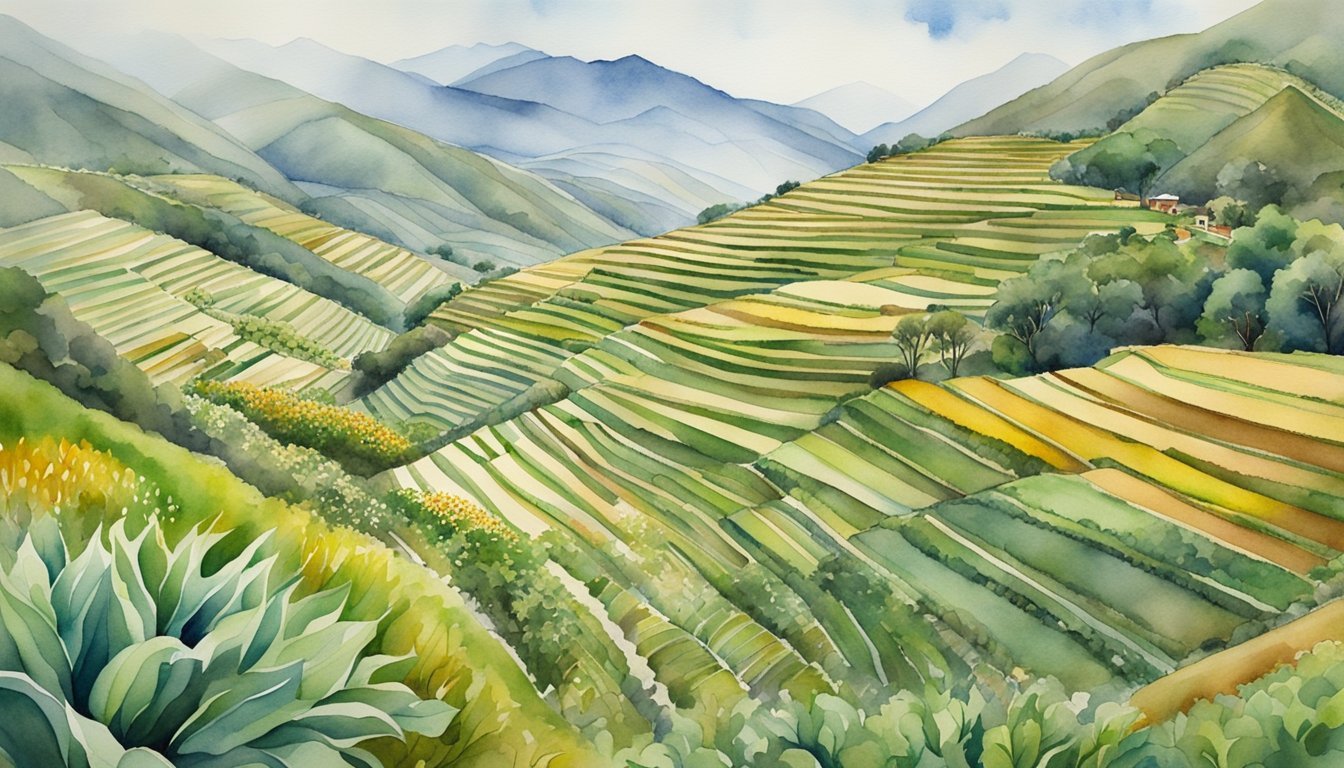Inca Agricultural Techniques
The Inca were masters of agricultural innovation, adapting their farming practices to diverse and challenging environments. They engineered sophisticated systems to optimize the production of staple crops and to ensure food security across their vast empire.
Terraced Farming and Irrigation
The Inca implemented terraced farming on mountainous slopes to create flat surfaces for agriculture, effectively preventing soil erosion and maximizing arable land. These terraces, known as andenes, were supported by stone walls and filled with fertile soil and organic matter. This architecture not only facilitated crop cultivation on steep gradients but also enabled microclimates beneficial for growth. In Inca agriculture, one can see the evidence of these impressive agricultural landscapes, which still exist today.
Irrigation systems were another cornerstone of Inca farming. Ingenious networks of canals and water channels ensured the distribution of water from rivers and springs to the terraces. The Inca also built cisterns and reservoirs, techniques captured in the description of Inca Food & Agriculture, to store water which was crucial during dry periods. These systems showcased their deep understanding of water management and conservation.
Domestication of Plants and Animals
Conscious selection and domestication of plants were integral to Inca agriculture. Potatoes, originating from the Andean highlands, were developed into numerous varieties, each suited to different altitudes and climates. Quinoa, a highly nutritious grain, was revered for its adaptability and protein content. Maize, too, became a vital crop, regarded for its versatility and used in the making of chicha, a ceremonial beverage.
In animal husbandry, the Inca domesticated llamas and alpacas for their wool, meat, and as beasts of burden. Farming Like the Incas reveals how these animals were essential for transporting goods across the empire. Guinea pigs also held a place of importance as a source of protein. This practice of domestication and selective breeding was a brilliant testament to the Incan ability to foster species that thrived in high-altitude conditions and contributed to the sustenance of their society.
Organization and Impact of Inca Agriculture

The Inca Empire stood as an exceptional example of complex agricultural management and societal structure, with a sophisticated system for food production and distribution which was integral to their success and the welfare of their people.
Storage and Redistribution
The Incas created an extensive network of storehouses that played a pivotal role in their ability to manage agricultural resources. These storehouses held vast quantities of food, clothing, and other essential items, ensuring that communities could survive during hard times. Food surplus from the harvest was stored and later redistributed in times of need, which showcased the detailed organization of Incan society. The state utilized the labor tax, or mit’a, to gather the workforce required for both production and construction of these facilities.
Cultural and Religious Significance
Agriculture in the Inca society wasn’t just a means of sustenance; it bore deep cultural and religious significance. The Incas believed in harmonizing their agricultural practices with their environment as an act of reverence toward their gods. Rituals and ceremonies were common before, during, and after the planting seasons, indicating that cultivation was an act embedded with religious importance. The use of Quipu, a system of knotted strings, was central in keeping track of the agricultural data, which reflects the methodical nature of Incan farming practices. Through such meticulous record-keeping, the Incas reinforced the agricultural success that supported the prosperity of their empire.

